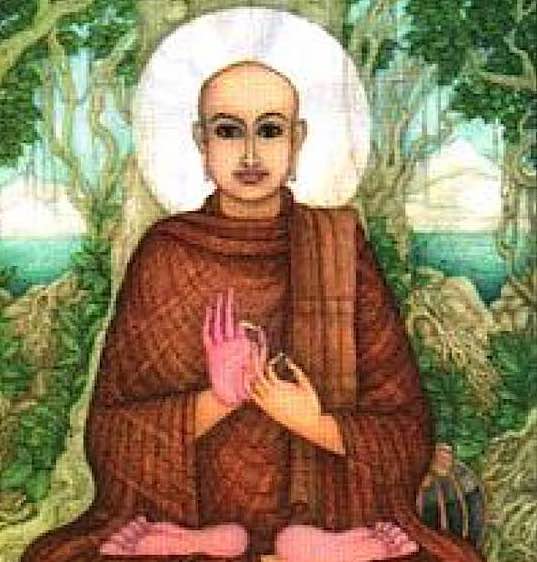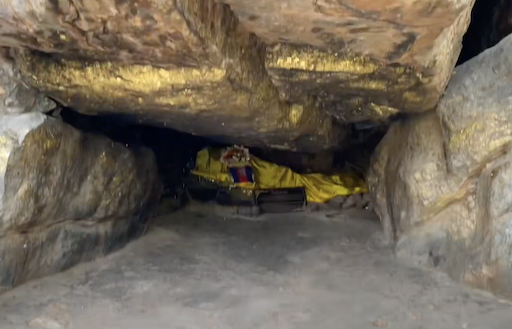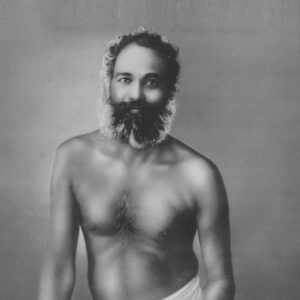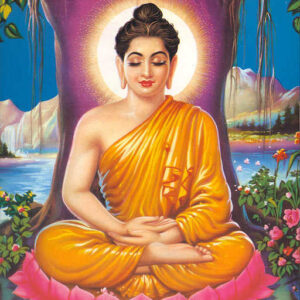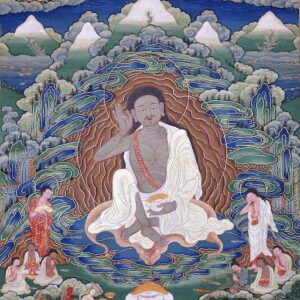This is Sariputta’s sadhana and his enlightenment cave in an ancient site where Buddha gave sermon to the monks. There is a place to sit and meditate. You can go into meditative states here effortlessly. This cave is also known as Boar’s grotto.
How to Get there
From Rajgir, you can take a horse tonga to the base of Gridhakuta hill, then take maximum 30 mins hike to the hill. This is the second cave you will encounter while going towards Vulture Cave.
Map: https://goo.gl/maps/XFFPAJNGSfF7xJhdA
About Sariputta
Śāriputra (Sanskrit: शारिपुत्र; Tibetan: ཤཱ་རིའི་བུ་, Pali: Sāriputta, lit. “the son of Śāri”, born Upatiṣya, Pali: Upatissa) was one of the top disciples of the Buddha. He is considered the first of the Buddha’s two chief male disciples, together with Maudgalyāyana (Pali: Moggallāna). Śāriputra had a key leadership role in the ministry of the Buddha and is considered in many Buddhist schools to have been important in the development of the Buddhist Abhidharma. He frequently appears in Mahayana sutras, and in some sutras, is used as a counterpoint to represent the Hinayana school of Buddhism.
Historians believe Śāriputra was born in the ancient Indian kingdom of Magadha around the 6th or 5th century BCE. Buddhist texts relate that Śāriputra and Maudgalyāyana were childhood friends who became spiritual wanderers in their youth. After having searched for spiritual truth with other contemporary teachers, they came into contact with the teachings of the Buddha and ordained as monks under him, after which the Buddha declared the friends his two chief disciples. Śāriputra was said to have attained enlightenment as an arhat two weeks after ordination. As chief disciple Śāriputra assumed a leadership role in the Sangha, doing tasks like looking after monks, assigning them objects of meditation, and clarifying points of doctrine. He was the first disciple the Buddha allowed to ordain other monks. Śāriputra died shortly before the Buddha in his hometown and was cremated. According to Buddhist texts, his relics were then enshrined at Jetavana Monastery. Archaeological findings from the 1800s suggest his relics may have been redistributed across the Indian subcontinent by subsequent kings.
Śāriputra is regarded as an important and wise disciple of the Buddha, particularly in Theravada Buddhism where he is given a status close to a second Buddha. In Buddhist art, he is often depicted alongside the Buddha, usually to his right. Śāriputra was known for his strict adherence to the Buddhist monastic rules, as well as for his wisdom and teaching ability, giving him the title “General of the Dharma” (Sanskrit: Dharmasenāpati; Pali: Dhammasenāpati). Śāriputra is considered the disciple of the Buddha who was foremost in wisdom. His female counterpart was Kṣemā (Pali: Khemā).
About Gautam Buddha’s Vulture Peak, Gridhakuta Hill
This is one of the most ancient sites where the Buddha is said to have preached his Lotus Sermon. Quite true to the meaning of its name as Vulture Peak indeed the peak appears as a shape of vulture head with a natural stone formation. The place is also referred as “Gujjhakut” in Buddhist text. One of the most ancient sites where the Buddha is said to have preached his Lotus Sermon was amongst the favorite meditating place of the Buddha. Even today one can feel the deep sense of spiritual power at the peak that is devoid of any man-made grandeur. A statue of the Buddha (600 BCE) was found here and currently housed at Archeological Museum of Nalanda.
During the Buddha’s time Rajgir, then known as Rajagaha, was the capital of Magadha and the largest city in north India. Spread out over a fairly wide area you will find the cool and shady Bamboo Grove, Devadatta’s Cave at Makdum Kund, the Sattapanna Cave where the First Council was held, Jivaka’s Mango Grove, Ajatasattu’s stupa, the Pipphili Cave where Maha Kassapa liked to stay and the Boar’s Grotto where Sariputta was enlightened, to name but a few.
Source
https://bodhi.travel/blog/rajgir-and-vulture-peak
https://www.buddhanet.net/e-learning/pilgrim/pg_23.htm
https://en.wikipedia.org/wiki/%C5%9A%C4%81riputra
